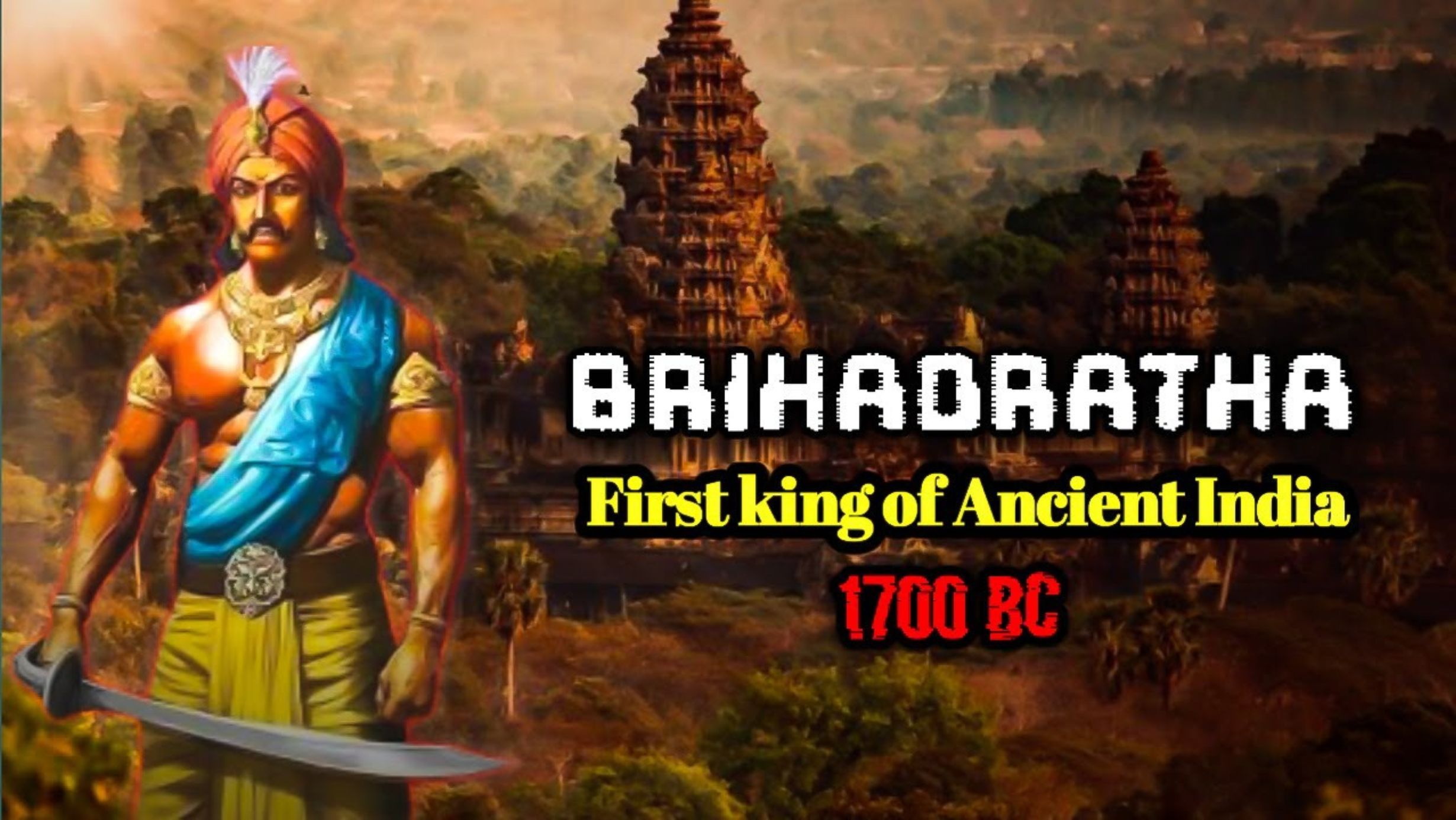The Brihadratha Dynasty was a prominent ruling family in ancient India, known for its significant contributions to the region’s history. Established around the 6th century BCE, this dynasty played a crucial role in shaping the political landscape of its time. It thrived in present-day Bihar and is recognized for its advancements in governance, culture, and military strategy. The dynasty witnessed a fascinating rise, marked by territorial expansion and cultural flourishing. However, like many great empires, it eventually faced challenges leading to its decline. Join us as we explore the captivating story of the Brihadratha Dynasty!
Historical Background

Before the rise of the Brihadratha Dynasty, India was a patchwork of small kingdoms and tribes. This fragmented political landscape was characterized by constant warfare and shifting alliances. The early rulers of the region often struggled for power, making it difficult for any single entity to establish dominance.
The Magadha kingdom, a significant power during this time, set the stage for the Brihadrathas. Under the leadership of Bimbisara and later his son Ajatashatru, Magadha expanded its territory, consolidating power in the eastern region.
The Brihadratha Dynasty emerged amid this tumultuous backdrop, seeking to assert itself. Early rulers like Brihadratha I and his successors contributed to political stability and cultural growth. They were instrumental in laying the foundations for a unified state, promoting trade and agriculture. This groundwork would eventually allow the dynasty to rise to prominence in ancient Indian history.
Foundation of the Brihadratha Dynasty

The Brihadratha Dynasty was founded by Brihadratha I in the 6th century BCE. This period was marked by significant political upheaval in northern India. Brihadratha I emerged as a powerful leader amidst the declining influence of the Magadha kingdom.
Key events leading to the establishment of the dynasty included strategic alliances and military victories. Brihadratha I successfully united various tribes and small kingdoms, forming a centralized authority. His leadership fostered a sense of unity and stability, which was crucial for the dynasty’s growth.
The dynasty’s capital was strategically located in present-day Bihar, enhancing trade and military capabilities. Brihadratha I’s governance focused on agricultural development and infrastructure improvements. These initiatives laid the groundwork for the dynasty’s influence in the region. As a result, the Brihadratha Dynasty became a significant player in the political landscape of ancient India, paving the way for future expansion and prosperity.
Territorial Expansion and Consolidation
During its peak, the Brihadratha Dynasty extended its territory significantly across northern India. At its height, it encompassed present-day Bihar, parts of Jharkhand, and even regions in Uttar Pradesh. This expansion was marked by strategic military campaigns and diplomatic marriages that strengthened alliances with neighboring states.
Notable campaigns included conquests against local rulers who opposed Brihadratha authority. The dynasty’s military prowess was demonstrated during the Battle of Ganges, where they defeated rival factions and secured critical trade routes. Additionally, the dynasty expanded its influence through treaties and alliances, ensuring stability in newly acquired regions.
Consolidation of power was achieved through effective administration. Local governors were appointed to maintain order and implement the dynasty’s policies. This organizational structure facilitated the integration of diverse cultures within the expanding territory. As a result, the Brihadratha Dynasty established itself as a formidable power in ancient India, fostering economic growth and cultural exchange throughout its realm.
Political Structure and Governance
The Brihadratha Dynasty had a well-defined political structure that facilitated effective governance. At the top of the hierarchy was the king, who held absolute power and authority over the kingdom. The king was responsible for making crucial decisions, leading military campaigns, and ensuring the welfare of the state.
Assisting the king was a council of ministers, which included trusted advisors and military leaders. This council played a vital role in advising the king on matters of state, including legislation, defense, and diplomacy. Their collective wisdom helped maintain stability and address the needs of the diverse population within the dynasty.
Local governance was structured through a system of appointed governors or officials. These local leaders were tasked with managing regions, enforcing laws, and collecting taxes. They ensured that the king’s policies were implemented effectively, allowing for efficient administration across the vast territories.
This layered political system fostered a sense of order and accountability. It also facilitated communication between the central authority and local communities. Overall, the governance model of the Brihadratha Dynasty contributed significantly to its stability and success during its reign.
Cultural Contributions
The Brihadratha Dynasty is known for its significant cultural contributions, particularly in art, literature, and architecture. The era saw the flourishing of various art forms, including sculpture and painting, which reflected both religious and secular themes. Notable sculptures, often found in temples, showcased intricate designs and craftsmanship that blended local styles with influences from other regions.
Literature also thrived during this period, with poets and scholars producing works in Sanskrit and Prakrit. These texts included religious scriptures, historical narratives, and poetry that enriched Indian literary traditions. They served not only as a means of cultural expression but also preserved the values and beliefs of the time.
Architecturally, the Brihadratha Dynasty constructed impressive temples and public buildings. Many of these structures featured ornate carvings and elaborate designs, symbolizing the kingdom’s wealth and artistic skill. The architectural style influenced subsequent dynasties, leaving a lasting legacy in Indian architecture.
Overall, the cultural achievements of the Brihadratha Dynasty played a crucial role in shaping Indian culture. They fostered a sense of identity and continuity, influencing art, literature, and architecture in the regions that followed.
Economic Practices and Trade
The economy of the Brihadratha Dynasty was primarily agrarian, with agriculture serving as the backbone of its prosperity. The fertile lands of the region allowed for the cultivation of various crops, including rice, wheat, and pulses. Advanced irrigation techniques were employed to enhance agricultural productivity, supporting the population and sustaining the economy.
Trade played a crucial role in the dynasty’s wealth. The strategic location of the Brihadratha Kingdom along major trade routes facilitated commerce with neighboring regions. Goods such as textiles, spices, and precious metals were exchanged, creating a vibrant market environment.
The dynasty established trade links with other kingdoms, enhancing cultural exchanges and economic ties. Merchants flourished, contributing to the overall prosperity of the region. Marketplaces became centers of economic activity, where artisans and traders showcased their products.
Overall, the economic practices and trade of the Brihadratha Dynasty significantly contributed to its stability and growth. The combination of agriculture and commerce not only supported the kingdom’s population but also laid the groundwork for its cultural and political achievements.
Military Strategies and Conflicts
The Brihadratha Dynasty had a well-organized military structure that played a crucial role in its expansion and defense. The army was composed of infantry, cavalry, and war elephants, allowing for flexibility in various combat scenarios. Strong leadership and strategic planning were essential components of their military organization.
The dynasty faced several notable conflicts that tested its military strength. One significant battle was the confrontation with the Mauryan forces, which aimed to expand their territory. The Brihadratha army initially had success but ultimately faced defeat due to the superior tactics employed by the Mauryans.
Another key conflict occurred during the resistance against southern invaders. The Brihadrathas demonstrated their military prowess by repelling these invasions, solidifying their power in the region. These battles not only showcased the military capabilities of the dynasty but also influenced its political dynamics.
Overall, the military strategies and conflicts faced by the Brihadratha Dynasty were pivotal in shaping its history. The outcomes of these battles impacted its territorial boundaries and established the dynasty’s reputation as a formidable power in ancient India.
Decline of the Brihadratha Dynasty
The decline of the Brihadratha Dynasty was influenced by several critical factors. Internal strife played a significant role, as power struggles among royal family members weakened the central authority. These conflicts often led to instability, making the dynasty vulnerable to external threats.
External invasions further contributed to the decline. The rise of powerful neighboring kingdoms, such as the Mauryas, posed a serious challenge. Their military strength and strategic prowess led to significant territorial losses for the Brihadrathas.
Additionally, economic difficulties strained the dynasty’s resources. As trade routes shifted and agricultural output declined, the economy faltered. This economic downturn reduced the ability to maintain a strong military and defend against invasions.
Overall, the combination of internal discord, external pressures, and economic struggles led to the eventual downfall of the Brihadratha Dynasty. By the time the dynasty lost its last strongholds, its influence in Indian history had significantly diminished. This decline marked the end of an era for one of ancient India’s prominent dynasties.
Legacy of the Brihadratha Dynasty

The Brihadratha Dynasty left a lasting impact on subsequent dynasties and Indian history. Their political and cultural developments influenced the Maurya Empire, which emerged as one of India’s most powerful dynasties. Many administrative practices and trade routes established during the Brihadratha era were adopted and expanded upon by later rulers.
The dynasty’s contributions to art and architecture also had significant repercussions. Their styles and motifs were integrated into the broader artistic expressions of the time, enriching Indian culture. This influence can be seen in temples and sculptures that reflect a blend of local and royal traditions.
Additionally, archaeological findings related to the Brihadratha Dynasty play a crucial role in understanding ancient India. Excavations in regions associated with the dynasty have unearthed inscriptions, coins, and artifacts that provide insight into their society. These discoveries are vital for historians studying the evolution of Indian governance, economy, and culture.
In summary, the legacy of the Brihadratha Dynasty continues to resonate in modern Indian history. Their achievements and influences laid foundational elements for future dynasties and remain significant in archaeological research.
Conclusion: Brihadratha Dynasty
The Brihadratha Dynasty played a pivotal role in shaping early Indian history. Their establishment set the stage for future political developments, while their cultural contributions enriched the region’s artistic landscape. The dynasty’s economic practices and military strategies influenced subsequent rulers, including the powerful Maurya Empire. Studying the Brihadratha Dynasty is essential for understanding the evolution of governance, culture, and trade in ancient India. Their legacy offers valuable insights into the historical narrative of the subcontinent and underscores the importance of examining lesser-known dynasties to gain a comprehensive view of Indian history.
FAQs
What time period did the Brihadratha Dynasty exist?
The Brihadratha Dynasty is believed to have existed from approximately the 6th century BCE to the 4th century BCE. Its timeline includes notable developments in Indian history leading up to the rise of the Maurya Empire.
Who were some notable rulers of the Brihadratha Dynasty?
Some prominent rulers include Brihadratha I, the founder, and his successors, such as the rulers who expanded the kingdom’s territories. Their contributions to governance and culture were significant during their reigns.
What were the main economic activities of the Brihadratha Dynasty?
The economy was primarily agrarian, with agriculture serving as the backbone. Trade routes facilitated commerce, allowing for the exchange of goods and cultural influences, contributing to the dynasty’s wealth.
How did the Brihadratha Dynasty influence later dynasties in India?
The dynasty set precedents in political organization and military strategies that influenced later dynasties, particularly the Mauryas. Their cultural and economic practices also provided a foundation for subsequent rulers.
What archaeological evidence exists to support the history of the Brihadratha Dynasty?
Archaeological findings, including inscriptions, coins, and remnants of urban settlements, have been uncovered in regions once ruled by the dynasty. These discoveries help historians piece together the social and political landscape of the time.

